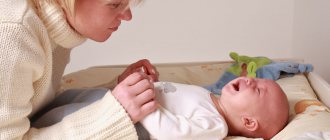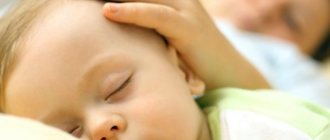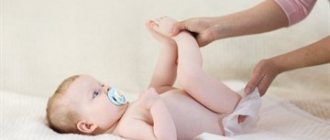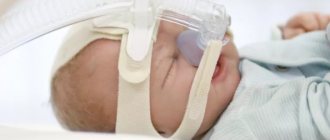How to avoid motion sickness in transport?
- Some children get sick more after eating, others before eating. Therefore, it is best to eat an hour and a half before the trip. What should the food be like? You should limit your consumption of fatty, sweet foods, and carbonated drinks. And, of course, you don’t need to overeat.
- Another important point: during the trip you need to swallow more often (drink cold water, suck mint candies). This reduces the likelihood of nausea and vomiting.
- In our body, the vestibular apparatus (inner ear and vision) is responsible for balance, so it matters where a child or an adult sits. In an airplane, the place where there is least vibration is the place near the wing; in a car or bus - front seats; on a train, it’s better to sit by the window and in the direction of travel, but on a ship, it doesn’t matter where, you’ll get motion sickness everywhere. During the trip, it is advisable to look into the distance.
- As for fresh air: it is also very important that it comes in. For example, in your car you can open the window, in an airplane you can sit your child in the middle and point 3 fans at him. This way, fresh air will circulate, which will alleviate motion sickness.
- Overheating is a factor that can increase the likelihood of motion sickness, as the mucous membranes of the mouth and nasal cavity dry out.
- Car air fresheners with different scents also increase the likelihood and provoke motion sickness, so before the trip you need to take care of your car, thoroughly wash and air it.
- If you know that your child gets sick after a certain time in the car, make stops and take your child for a walk outside. This will be good prevention.
- Today, physical methods of prevention to alleviate the condition of motion sickness in transport, namely acupressure, do not lose their relevance. The first point is located on the inner surface of the shoulder. From the wrist, we apply three fingers of the one who is sick and measure a point in the center, with gentle pressure we rub this point. The second point is located below the earlobe, between the neck muscles and the angle of the lower jaw. These points can be massaged simultaneously and alternately on the hands. In time - until the condition improves.
- One of the good ways to prevent motion sickness is various physical training and activities: playing sports, swinging on a swing, doing exercises in an upside-down position, etc. This way you prepare the child’s body not only for transport, but also for a flight into space.
- Regarding medications. They can also be used when you realize that none of the above will help or when it is not possible to use the above methods.
Suitable for children aged 3 years and older:
- Dimenhydrinate (Dramina, Aviamarin) tablets 50 mg
- Cocculin tablets homeopathic
Suitable for children aged 6 years and adults:
- Avia-sea homeopathic tablets
Suitable for children aged 4 years and older:
- Vertigohel homeopathic tablets
You can also try patches and bracelets. Their effectiveness has not been proven; there are cases when they help and when they do not.
If a child gets seasick
If the baby still gets seasick, then your task is to alleviate the child’s condition.
- Monitor the temperature in the car, do not let your child get too hot. This means that you should not dress him too warmly.
- You can use a small fan to keep your baby cooler, but don't overdo it, or your baby may get cold.
- You can attach a special screen to protect from the sun on the car window so that bright light does not interfere with looking ahead.
- Be sure to evaluate the ventilation in the car. Do not allow strong perfume or food odors.
- Cigarette smoke increases nausea if the child is already seasick, and can also provoke nausea. Do not allow anyone to smoke in the car.
- If your baby vomits, give him a couple of sips of breast milk, formula, or cool water to prevent dehydration.
- If the child has vomited several times, it is better to give a medication for dehydration - a rehydrant, which can be bought at the pharmacy.
- If you suspect your baby might vomit again, cover your baby's chest and stomach with a towel, as it will be easier to remove the towel than to completely change your baby's clothes.
What about medications for motion sickness?
In fact, medications for motion sickness are unsafe and have a number of side effects.
Despite this, the most effective drugs for motion sickness are drugs with Dimenhydrinate, for example, Dramamine, Aviamarin, but they are allowed from 1 year and are prohibited for pregnant and lactating women. It’s up to you to decide whether to give your child such a drug or not, but do not forget to consult with your pediatrician.
It happens that motion sickness strikes for the first time and the child vomits in the car, although this has never happened before. Do not panic! Stop the car, wash and change the baby, calm the child down, because this is a new condition for him. Give your child water, walk in some fresh air, and wait until your child feels better before driving again. Motion sickness is always unpleasant even for an adult, and even more so for a baby. But if preventive measures are observed, it is quite possible to alleviate the child’s condition. Take care of yourself and your loved ones and be healthy!
Is a doctor needed when a child is rocking in transport?
If the child felt unwell in transport, as well as within an hour after the stop, then you need to see a doctor and sort out this issue.
Since motion sickness is a disruption of the connection between the vestibular system and vision, the child may have problems with vision (sharpness, astigmatism, strabismus), diseases of the ENT organs (the child had otitis media). Therefore, it is necessary to identify these diseases and treat them.
If you have had otitis, preventing motion sickness on an airplane is to use vasoconstrictor drops in the nose before takeoff and especially before landing.
General advice for parents
In order to prevent the development of severe symptoms of seasickness in a child, parents must respond correctly to the situation as soon as the baby develops the first negative symptoms during a trip. You can achieve relief with simple recommendations.
More fresh air
If you have a long car ride ahead of you and your baby is constantly getting motion sickness, try to stop and breathe fresh air as often as possible. This will eliminate oxygen starvation of the brain and thereby help reduce the manifestations of kinetosis.
If you feel nauseous, you can open one of the windows slightly. But there should be no draft in the car. In this case, it is advisable to place the child in a horizontal position. If possible, apply a cool cloth to your forehead. This can be a handkerchief or napkin soaked in water.
Proper eating
When you go on a trip, make sure your baby eats. Keeping your stomach empty will only cause more negative symptoms. Overeating is also strictly not recommended. The food eaten should be easily digestible and low-fat. You can also take a light snack with you on the road. Saltine crackers, apples and other light foods are suitable.
You should not have a snack while driving. For this purpose, it is better to make a short stop.
Choosing the right time to travel
If parents have such an opportunity, then it is best to go on a long journey at night. During this time, the baby will most likely be asleep. Sleep is the best cure for seasickness. During sleep, negative symptoms, as a rule, do not develop.
Where should you sit?
When traveling, it is advisable to position the child seat so that the baby can look forward through the windshield. If his gaze is always fixed on the side window, this will very quickly cause motion sickness.
A flickering picture will cause a malfunction between the interaction of the optic nerve and the vestibular apparatus.
When is it necessary to see a doctor?
Sometimes, when a child has kinetosis, it is impossible to do without the help of specialists. You should seek medical help in the following situations:
- The child often loses consciousness during long trips. This symptom indicates that the body turns on a defensive reaction and turns off consciousness due to the fact that it cannot cope with the load.
- The baby is very excited, afraid, panics, and is in an aggressive state.
- There is a malfunction of the heart. Blood pressure increases or, conversely, decreases sharply. This is extremely dangerous for those patients who have congenital diseases of the cardiovascular system.
- The child suffers from vomiting during the trip. In this case, vomiting does not bring relief.
If such serious symptoms develop in their child, parents should under no circumstances ignore the problem and self-medicate. Timely seeking medical help and competent treatment is the key to successful treatment of kinetosis in children.
With proper treatment with medications and the use of training to strengthen the vestibular system, it is possible to get rid of seasickness in just a few months.
Traditional methods to help with seasickness
Reviews from many parents and specialists indicate that various natural recipes help well with kinetosis. Their advantage is considered to be good effectiveness and relative safety. Contraindications can only be the child’s individual intolerance to a particular product. Let's look at a few effective recipes.
Spinach and oats
To prepare this medicine you will need oats and fresh spinach. First you should prepare an oat infusion. To do this, brew a tablespoon of the product with boiling water and leave for several hours. Now you need to squeeze out the spinach juice.
This can be done using any available method, for example, by passing the greens through a meat grinder. Add 3 tablespoons of spinach juice to the oat infusion and give the child the medicine three times a day a few days before the trip.
Mint tea with lemon
Tea with mint and lemon is a safe, and most importantly, effective remedy for nausea and motion sickness. You can give this tea to your child before a trip or take it with you in a thermos. As soon as nausea sets in, you should let your baby take a few sips of tea.
In addition, you can cut the lemon into slices, put it in an airtight container and let your child suck on a slice during nausea.
Green tea
Few people do not know about the benefits of green tea. It has a positive effect on almost all organs and systems of the body, saturates it with minerals and vitamins, and also removes negative components.
If your baby suffers from seasickness during a trip, offer him to chew a leaf of green tea. Practice shows that this helps to quickly cope with nausea and other negative symptoms of motion sickness.
Ginger tea
If a child under one year old or older feels sick while driving, take ginger tea with you. Ginger will help normalize the baby’s condition and make him feel better during the trip.
In addition to tea, you can use peeled slices of root vegetables. You can add a little honey for taste.
Peppermint candies
If you don’t have time to prepare mint tea, you can use a simpler, but no less effective method. Take mints with you on the road. As soon as your baby complains of nausea, give him a lollipop.
In most cases, this method is excellent at eliminating signs of seasickness in children.
Honey and mint drink
If you have a long trip ahead and your child gets very sick, you can try using such a useful and safe remedy as a honey-mint drink. To prepare it, brew mint with boiling water, let the drink brew for 15-20 minutes, and then add a little honey. The only contraindication is if the baby is allergic to honey.
Despite the apparent safety of natural recipes, it is recommended to use them only after consultation with a specialist. This is especially true in cases where seasickness develops in children under 3 years of age.
Characteristic symptoms
Nausea is a clear symptom of motion sickness.
Motion sickness of a baby can manifest itself with the following symptoms:
- pupils dilate;
- the skin becomes cold and pale;
- perspiration appears;
- the child begins to breathe rapidly;
- heart rate increases;
- the baby may complain of dizziness and excessive salivation;
- The most obvious sign of motion sickness is severe nausea and vomiting.
Risks. Why is it necessary to treat?
If a child or adult gets sick in transport, then this disease cannot be left to chance. Modern man cannot do without traveling, including over long distances. This means that every time he gets into a car or other type of transport, he will again and again have to experience the symptoms of kinetosis if effective measures are not taken. However, prolonged manifestation of the disease is associated with profuse vomiting, i.e. loss of important fluid for the body. Developing dehydration leads to conditions such as:
- reduced blood pressure in the arteries (arterial hypotension), therefore, all organs do not receive sufficient “nutrition”;
- exhaustion and dystrophy;
- depression.
These conditions are especially dangerous in a child whose body is still growing and developing. Therefore, motion sickness disease must be treated, especially in children.










